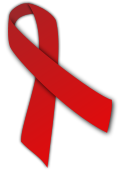The information encoded in your DNA determines your unique biological characteristics, such as sex, eye colour, age and Social Security number.
Dave Barry (joke)
The DNA making up our genes are around 99.9% identical among individuals of all nationalities. While most gene sequences are almost identical between all people, some genes can slightly differ among individuals and these are known as alleles (Gr. allelos; other). Alleles are forms of the same gene (or any DNA sequence) with small differences in the nucleotide sequence known as either polymorphisms if they are common in a population, or mutations if they are rare.
Together, these small DNA differences contribute to each person’s unique physical and behavioural features, usually by affecting differences in the amount of a protein produced or resulting in an altered protein which does not function as it should do. When a particular gene is grossly affected by a DNA alteration that has a negative impact on the health of an individual, a genetic disease can present. More than 4,000 genetic diseases have been so far been identified. While most of these are very rare, some are relatively widespread, especially within certain ethnic groups. Around 3% of all children born contain a significant genetic disorder or birth defect and, for individuals under age 25 years old, around 5% develop a serious disease with an important genetic component.
However, it is important to appreciate that not all mutations result in severe deformities incompatible with life. Mutations serve as the driving force of evolution – as our environment constantly changes, so are we constantly evolving to become more adapted to the environment (“fitter” in the Darwinian sense of the word).
For instance mutations in a gene coding for a protein important in helping direct white blood cells to sites of inflammation, appears to inhibit infection from some strains of HIV.

